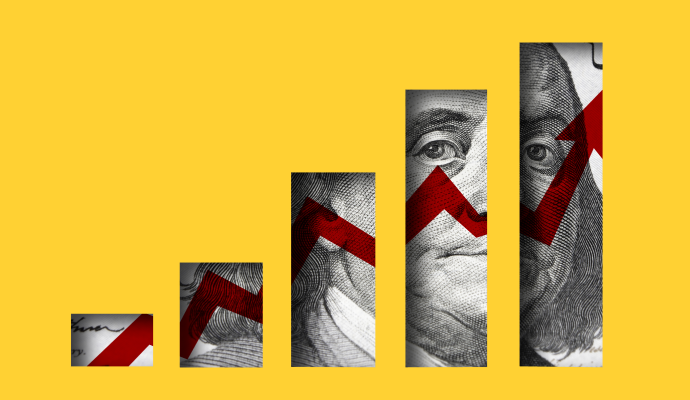Hospital Costs for Inpatient COVID-19 Treatment Rose 26% During Pandemic
Hospital costs for inpatient COVID-19 treatment increased more than five times the rate of medical inflation during the pandemic.

Source: Getty Images
- The costs of providing inpatient COVID-19 treatment increased by 26 percent over the first two years of the pandemic, according to a study published in JAMA Network Open.
Through the end of 2022, there were more than 660 million COVID-19 cases and nearly 6.7 million deaths worldwide, with one in seven of these events occurring in the United States. The demand for hospital services peaked during the Omicron surge, from November 2021 to February 2022, when patients with COVID-19 accounted for over one-fifth of hospital admissions.
Researchers used inpatient-level data from March 1, 2020, to March 31, 2022, from more than 800 US hospitals to assess how the mean hospital cost to provide inpatient care for COVID-19 patients varied throughout the pandemic.
The study sample included 1.33 million inpatient stays across 234 teaching and 607 community hospitals. The majority of patients presented to the emergency department, 13 percent received invasive mechanical ventilation, 27 percent had an intensive care unit (ICU) stay, and 13 percent died during their stay. The mean length of stay was 8.9 days.
Across the study period, the unadjusted mean direct hospital cost per inpatient stay was $13,023. After adjusting for patient risk, the mean cost was $11,275. Average hospital costs were higher for men ($12,097) than women (10,654). Patients who went to a skilled nursing facility or rehabilitation facility had the highest adjusted mean hospital costs at $14,005. In contrast, those who died ($9,580) or were discharged to hospice ($10,080) had the lowest costs.
Hospital costs were $11,274 with private insurance, $11,488 with US military insurance, and $13,106 with worker’s compensation plans.
At the end of March 2020, the adjusted mean hospital cost was $10,394 per stay. This amount rose to $13,072 by the end of March 2022, marking a 26 percent increase. Meanwhile, the average increase in medical care costs over the same time period was just 4.7 percent.
The varying costs were likely due to a patient’s use of extracorporeal membrane oxygenation (ECMO) during the stay. Patients with ECMO had an adjusted mean hospital cost of $36,484, compared to $11,266 for those without ECMO. Patients using invasive mechanical ventilation also had significantly higher costs compared to those not using this treatment ($20,941 versus $9,614).
The share of stays that included ECMO or mechanical ventilation was 23 percent at the end of March 2020, peaked at 30 percent in late 2021, and then declined to less than 20 percent by the end of March 2022.
Certain comorbidities were associated with higher hospital costs and a higher likelihood of receiving ECMO.
For example, patients with obesity had $2,924 in additional treatment costs compared to those without obesity, and 30 percent of patients with obesity required ECMO or mechanical ventilation. Patients with coagulation deficiency had high rates of ECMO or mechanical ventilation and $3,017 in additional inpatient costs, but 22 percent of these patients died.
While patient composition may have influenced hospital costs, challenges on the supply side were also likely involved. High costs of drugs, labor, and supplies increased the costs of delivering inpatient care during the pandemic.
The cost of prescription drugs used to treat COVID-19 grew, while the federal relief funds for hospitals halted during the Delta and Omicron surges. These hurdles may have increased the need for reimbursable charges, leading to higher costs, researchers suggested.
